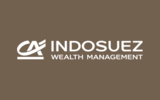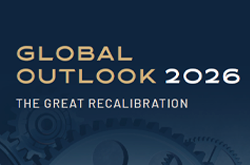Jackson Hole: small City, big Impact
Monthly House View - July 2025 - Download here
As we head into the summer, many are looking forward to a well-deserved break after a tumultuous first half of the year. Meanwhile, central bankers will be hard at work. Each year, the Federal Reserve (Fed) of Kansas City organises the Economic Policy Symposium in Jackson Hole, Wyoming — one of the most prestigious and influential central banking conferences in the world. In a world marked by global instability and escalating geopolitical tensions, the Jackson Hole Summit takes on even greater significance. Central banks serve as anchors of stability, offering a broad economic vision while maintaining their vital independence.
On a recent personal trip to Jackson Hole, I was struck by its breathtaking beauty. It’s easy to see why this location was chosen — it provides the perfect backdrop for focused, uninterrupted discussions. The inaugural event in 1982 was famously inspired by Paul Volcker’s love of fly fishing. This year, 120 carefully selected participants, including leading academics, policymakers and a handful of journalists, will attend.
CENTRAL BANK DILEMMAS
This year’s symposium comes at a time when central banks face unique challenges but share common concerns:
The United States Federal Reserve: “To cut or not to cut?”
Inflation remains a risk but has yet to materialise meaningfully from tariff effects. In fact, May’s inflation reading was the fourth consecutive number below expectations. Additionally, budget deficits and their impact on bond markets are likely to dominate discussions.
The Bank of Japan: “To raise or not to raise?”
Inflation in Japan remains well above target, but expectations for rate hikes have softened. Quantitative tightening, which began last summer, is being tested as the Bank of Japan contends with the steepest yield curve among developed nations. In our view, the Bank of Japan is in a difficult position and may need to resort to selective quantitative easing to stabilise its bond market.
The European Central Bank: “To cut — but how far?”
European Central Bank (ECB) president, Christine Lagarde, finds herself in a slightly better position this year. Having been the first to cut rates in June 2024, the ECB has halved rates in the past 12 months.
Inflation is at target, peripheral spreads are tight, and bond markets are stable — for once, the ECB isn’t lagging behind. We anticipate one additional rate cut after the summer, followed by a prolonged pause.
INVESTOR DILEMMAS
The United States (US) economy has once again demonstrated remarkable resilience despite ongoing political turbulence and the oscillating tensions around tariffs. Inflation remains stable, consumer spending is holding up, and the labour market shows no significant signs of stress. Could we be heading into a summer “Goldilocks” scenario?
While our April economic outlook took a cautious stance, it is clear that the worst has been avoided. We are not calling for a reacceleration just yet, but we do advocate for keeping an open mind. A number of events and deadlines this summer could spark market volatility, and we remain on the lookout for opportunities to redeploy capital when the timing is right.
Globally, investors remain cautious, reflected in modest positioning toward risky assets. However, retail investors, corporate share buybacks and hedge funds have been steadily increasing their exposure, especially after buying the dip in April. Institutional investors, by contrast, have been slower to reposition, leaving room for further reallocations toward equities.
The behaviour of the US dollar also warrants close attention. While US equities are trading just a few percentage points shy of their alltime highs, the dollar has continued to weaken. This trend, while becoming more widely acknowledged, is prompting international investors — including us — to hedge their US exposure. Recent data shows a significant increase in portfolio hedging on US assets, signalling a shift in sentiment. While investors are not outright selling their US holdings, they are re-evaluating their dollar exposure. This development is noteworthy and bears continued monitoring. For now, we hold a cautious outlook on the US dollar.
As always, we remain vigilant in navigating these complex dynamics, ensuring our strategies are well-positioned for the months ahead.
Monthly House View, 20.06.2025. - Excerpt of the Editorial
June 30, 2025




